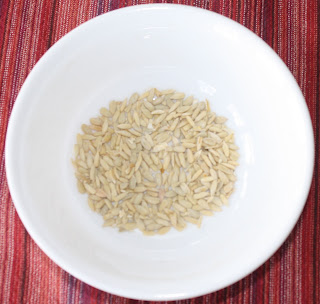I had added new seeds to some of the area before I left for Northern Ireland a couple of weeks ago. But it really hasn't rained since and I haven't watered. As far as I know, these seeds are still just sitting in the ground. I watered after I weeded yesterday, so perhaps new sprouts will emerge. I can be patient and will continue watering now that I am home.
It occurred to me this morning that my strategy could use a little adapting. When I planted earlier I went through an elaborate strategy to glue seeds to napkins. For my pre-Irish catch-up, I just sprinkled seeds. Of course, getting seeds requires breaking open pods, which is also laborious. Today I thought, why not just plant the pods? There are probably (someone should really know for sure) 4 to 6 seeds in each pod. That's how nature probably does it; keeps the seeds in the pod until they sprout. So I took 50 seed pods (pictured) and planted them directly in the soil. I know where I planted them so we will see how they sprout.
I can think of two additional reasons (other than ease) for keeping seeds in the pods and just planting the pods. First, taking the seeds out of the pods might be damaging to the seeds. You often have to crush to pods to break the seeds loose, which might cause harm to the seeds. Second, the way pods are constructed, it would seem that they have a natural ability to trap just a little bit of moisture. This may be important for germination.
Garlics on the other hand have sprouted well. Of the 32 cloves I planted, 31 have come up. I will have more garlic than I can use, but there are always friends and other gardeners.












